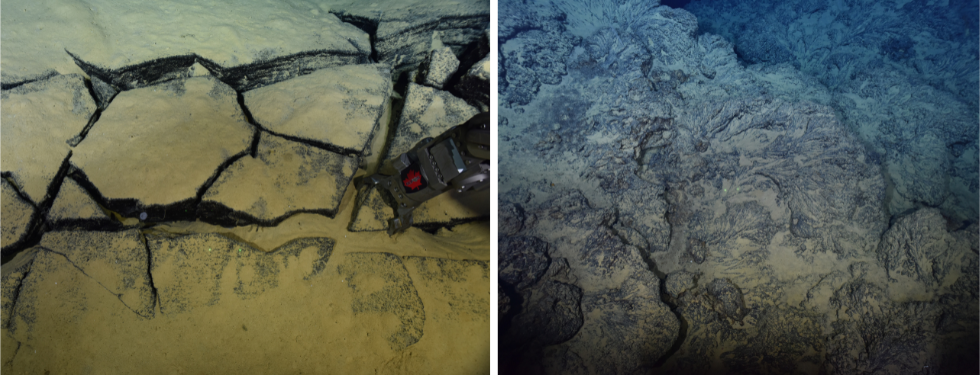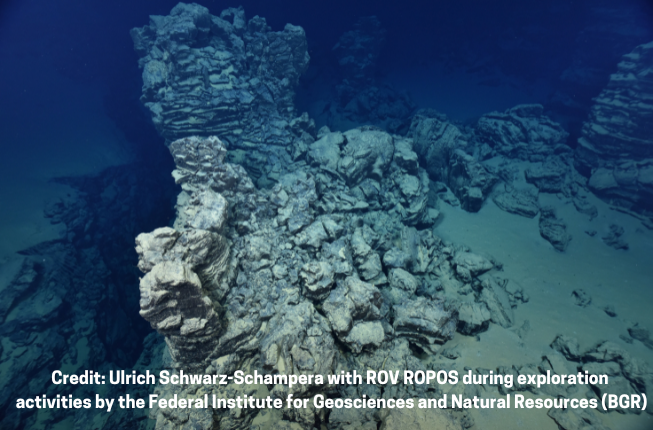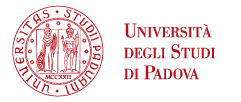Pushing the limits: the domino effect of a plume from Earth's deep interior on the tectonic chessboard.

Triple junctions are tremendous markers of Earth’s outer jigsaw crust and its constant movements and reorientation. Triple junctions tag the intersection of three tectonic plate boundaries. As the plate boundaries are highly mobile, the triple junctions are as well. The changes in their positions have long been recognized as powerful tracers of the motion of Earth’s tectonic plates through time. Yet, the dynamic and tectonic processes that govern their migration are still enigmatic.
Using bathymetric and magnetic data acquired during an exploration program of the Federal Institute for Geosciences and Natural Resources, Christine Meyzen, University of Padua, and Ulrich Schwarz-Schampera, International Seabed Authority, have tracked changes in direction and motion of plate boundaries circumventing the Rodrigues Triple junction within the Indian Ocean since 8 Ma.
Their research, recently published in Geology, provides evidence for a general northeastward migration as a consequence of short-term readjustments of its plate boundaries driven by transient motion changes of the Capricorn plate, a minor tectonic plate lying beneath the Indian Ocean basin. The motion changes are driven by pulses of push forces exerted from ephemeral captures of Earth’s mantle with its Amsterdam–St. Paul plume tail by the Southeast Indian Ridge at the southeastern part of the Capricorn plate.
The Amsterdam-St. Paul plume, lying today midway between Sumatra and Antarctic, spewed massive amounts of lava from Earth’s mantle to spawn several seamount chains at the diffuse boundary between the Capricorn and Australian plate, before being captured by the Southeast Indian ridge between 9.7-6.3 Ma.

Volcanic pillars displaying numerous plate-like shelves that record the episodic and successive formation and collapse of a ponded lava lake, built on pillow lavas along the Southeast Indian Ridge.
The particular lava lake is exposed over an area of 130 by 70 m, with pillars up to 3m high, and indicates rapid local eruption and volatile-rich composition
The new results of Meyzen and Schwarz-Schampera highlight the clear connection between the first capture of the Amsterdam- St Paul mantle plume tail and a rotation and acceleration of the Capricorn plate that was pushed as the underlying plume hits its edge. The plume tail was “a major force” in pushing and accelerating Capricorn’s motion because it hits it at its edge.
It was also recognized that this "plume-push" force has a domino effect on other tectonic plates. The rotation of the Capricorn plate induced a cascade reaction chain triggering the rotations of the sub-African plates.
The team goes one step further proposing that the mantle tree-like structure, which expands its branches from the deepness of Earth’s interior underneath southern Africa toward the surface across the Indian ocean, might control part of the tectonic motion of plates in this region in periodically expulsing plumes – with consequences for the rise of the Himalayan plateau.
Link to research: https://doi.org/10.1130/G51131.1
Title: The complex Rodrigues triple junction migration since ca. 8 Ma: A response to episodic Amsterdam–St. Paul hotspot tail capture by the Southeast Indian Ridge?
Authors: Christine M. Meyzen; Ulrich Schwarz-Schampera





